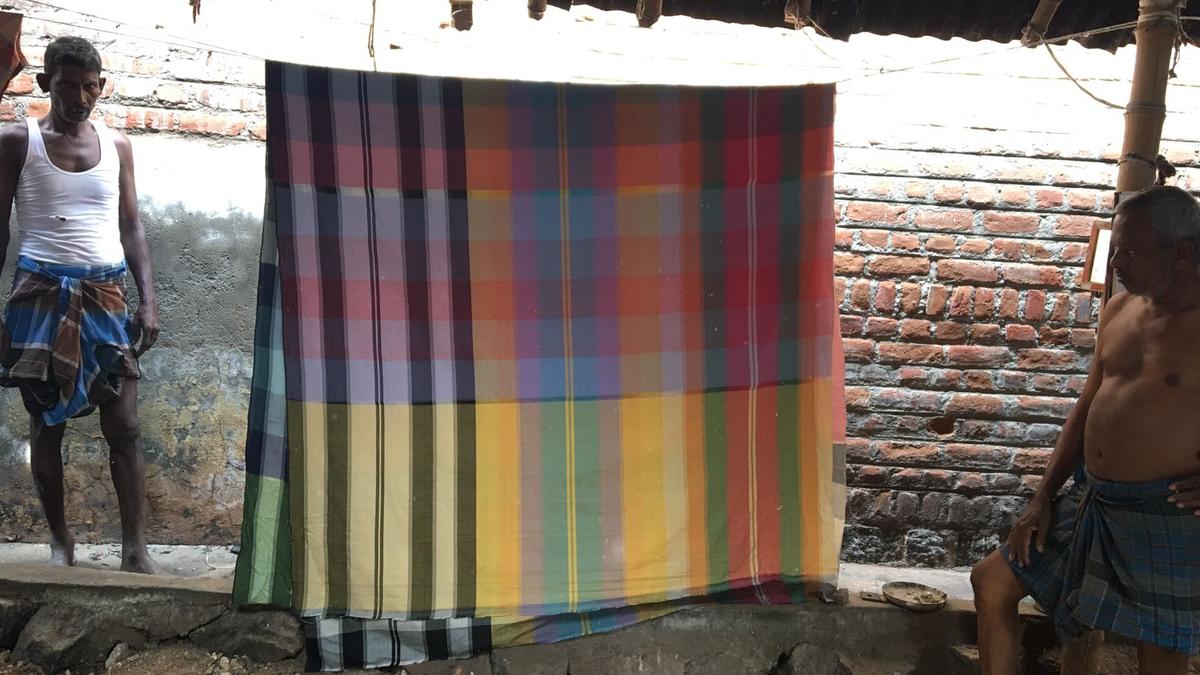
Paul Beumer’s ‘Play becomes joy’ exhibition | ‘I don’t believe in the hierarchy between art and crafts’
The Hindu
Paul Beumer speaks on his process, working in tandem with weavers from Karur, and colour as communication
At Dutch artist Paul Beumer’s first solo exhibition in India, a site-specific wall hanging got many visitors to stop and think. The ‘painting’ made with strips of Madras check fabric made them question whether textile can become art. Play becomes joy, joy becomes work, work becomes play — showcased at Artisans’ during the Mumbai Gallery Weekend 2025 last month — is a collection of textiles, all created around the Madras check, by weavers from Karur in Tamil Nadu.
Beumer, though formally trained in painting, abandoned a studio practice to explore his interest in non-western fabrics and textiles, travelling through Africa and Asia. In India and Sri Lanka particularly, he found that the textiles appeared akin to abstract paintings.
“My fascination for Madras checks brought me to Karur. There, through a friend of mine who is also a weaver, I found a small-scale lungi weaving mill that was interested in taking on the experiment,” he says, of his project, named after a saying by Swiss painter-designer Johannes Itten. He adds that some of the details were changed by the weavers. “Maybe these details got lost in translation. And that’s something I don’t mind at all.”
Here, he speaks about textile as both an art and craft:
The works are ultimately all created by my hand. I edit or cut and make new compositions of the material that is sometimes made by craftsmen and sometimes only found. For example, I made compositions out of the linings of kimonos. It is this metamorphosis that turns the raw material into what you can call art.
Weaving is a specialist and laborious activity, and I make no secret of the fact that I do not weave myself. I document the process of working together with the craftspeople and know the weaver by name. They are my friends and collaborators, and in this way, I try to bring attention [hopefully] to the craft of weaving.
When I set out to a new, and for me, unknown place, I want the encounter to be free of prejudice and expectations. My creative process is divided into a series of stages. The first stage is responding to a visual stimulus and the excitement of seeing something new. A combination of colours, or design. In the next stage, I like to find out how a piece is made, what the material is, but also research its history and meaning.













